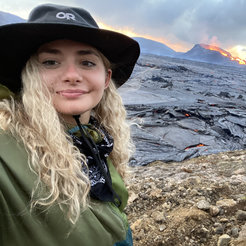
Brooke Polak (USA)
brooke.polak @ uni-heidelberg.de
Modeling the formation and early evolution of star clusters
Most stars are born in groups -- star clusters. The properties of star clusters are deeply entangled with the environment in which they are formed, their galaxies. Therefore, studying the formation and evolution of star clusters is an important step to understanding individual star formation and galaxy evolution. Even so, there are still a lot of mysteries surrounding star clusters: how they form, explaining their properties and composition, how they evolve, how the properties of the stellar population evolve, and so on. We are using the Torch code to simulate the formation and evolution of star clusters, from the gravitational collapse of a molecular cloud to gas dispersal by stellar feedback. Torch uses the Astrophysical MUltipurpose Software Environment (AMUSE) to couple the MHD code FLASH with the N-body code ph4 and stellar evolution code SeBa. The Torch framework is one of the most self-consistent star cluster formation and ecolution models to date. I am focusing on the high mass cloud regime (>=106 Msun) to study the formation of Young Massive Clusters and see how they compare to Globular Clusters. Because these massive clouds will produce >100,000 stars, I've had to replace ph4 with the more efficient N-body code PeTar. PeTar was built to quickly simulate the gravitational interactions of hundreds of thousands of stars by using different solvers for different distance regimes: a Barnes-Hut tree for long distance forces, a Hermite N-body solver for short distance forces, and Slow Down Algorithmic Regularization (SDAR) for binaries and higher order systems. With these simulations, we hope to fully characterize the star clusters born from these high mass clouds and study their properties such as sub-clustering, star formation efficiency, gas dispersal efficiency, UV photon escape fraction, and the chemical distribution using tracer particles. We then will compare the properties of our clusters to recent observations.
Supervisor: Ralf Klessen (ITA)
